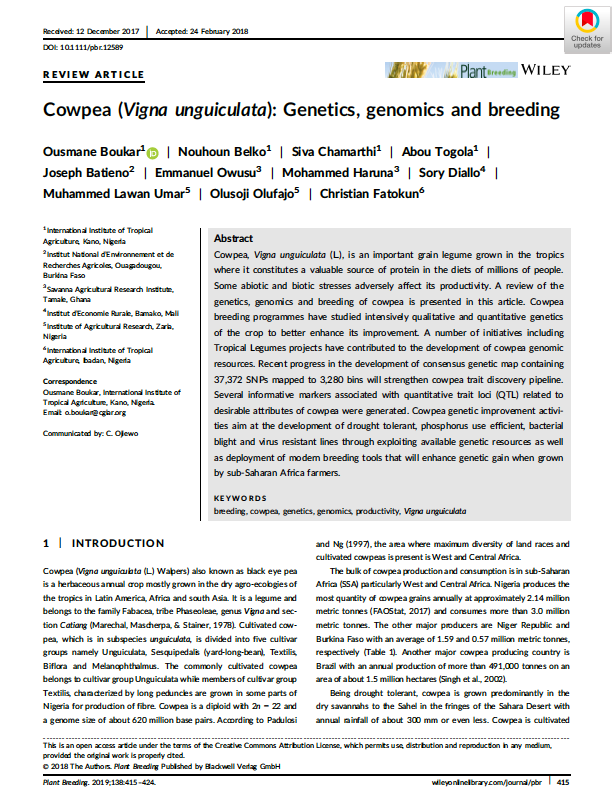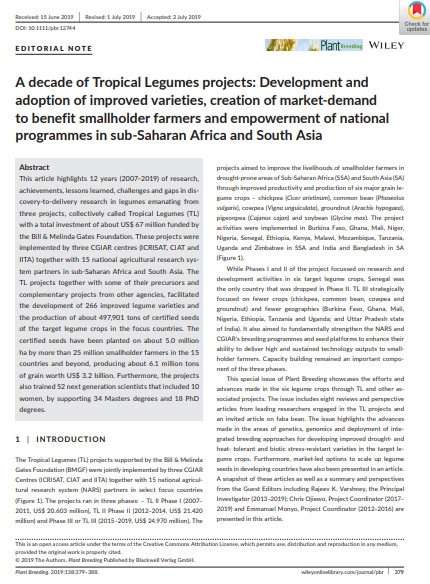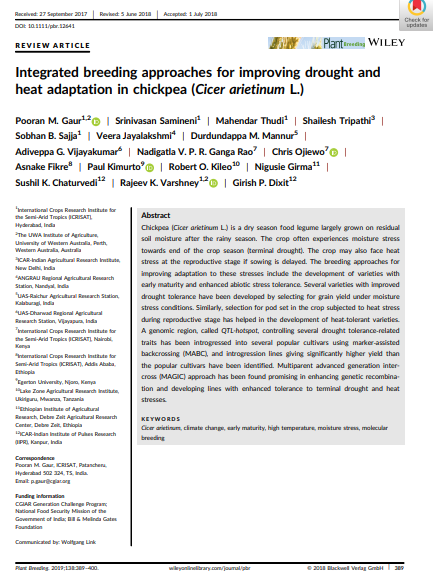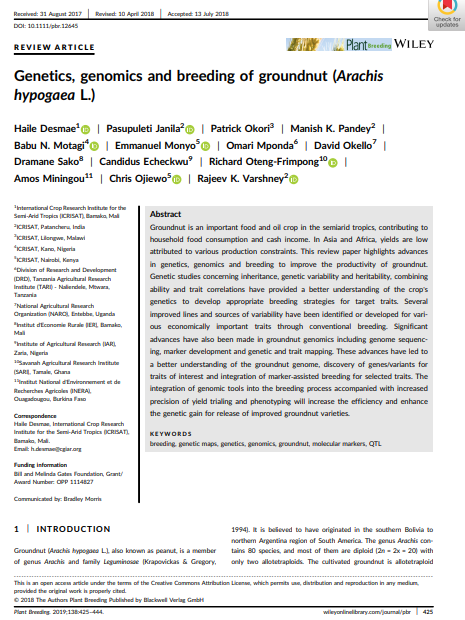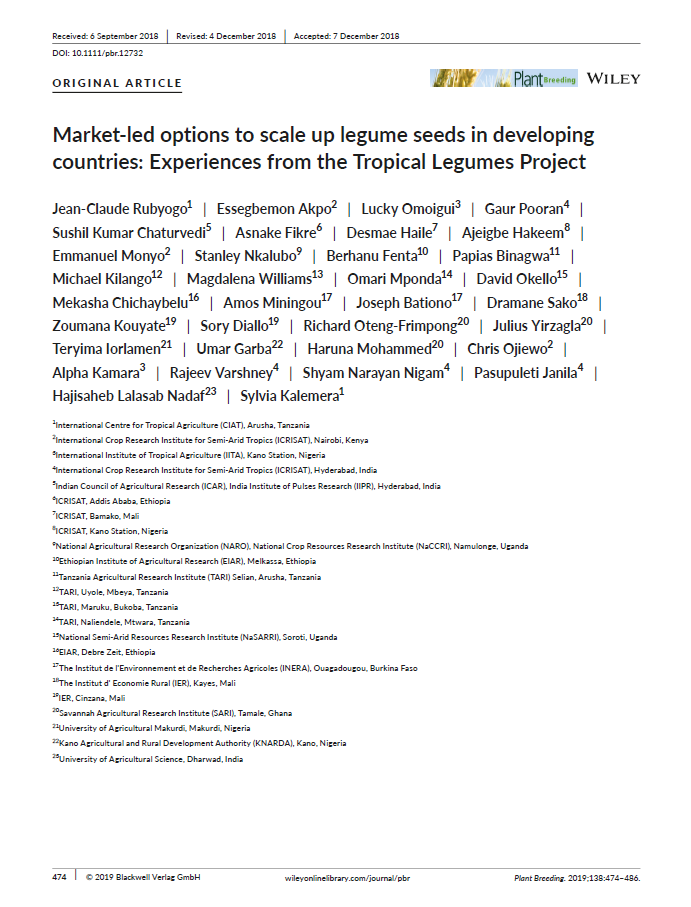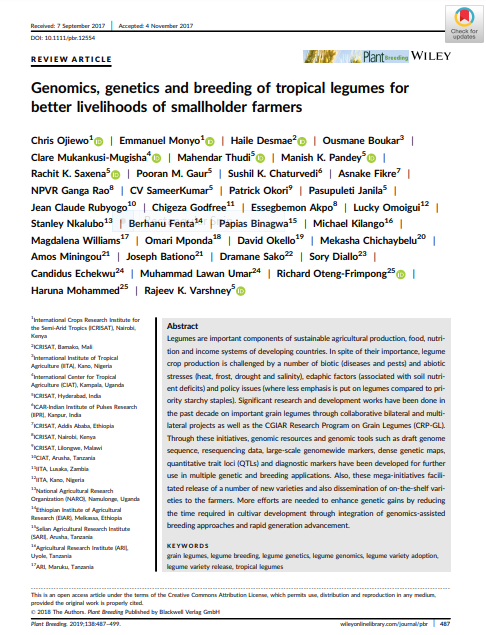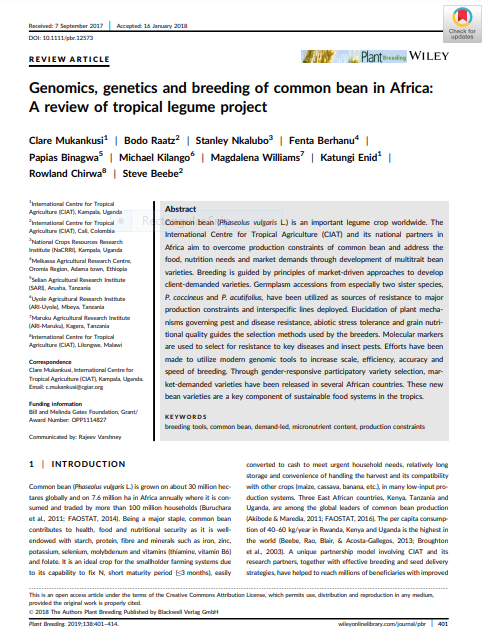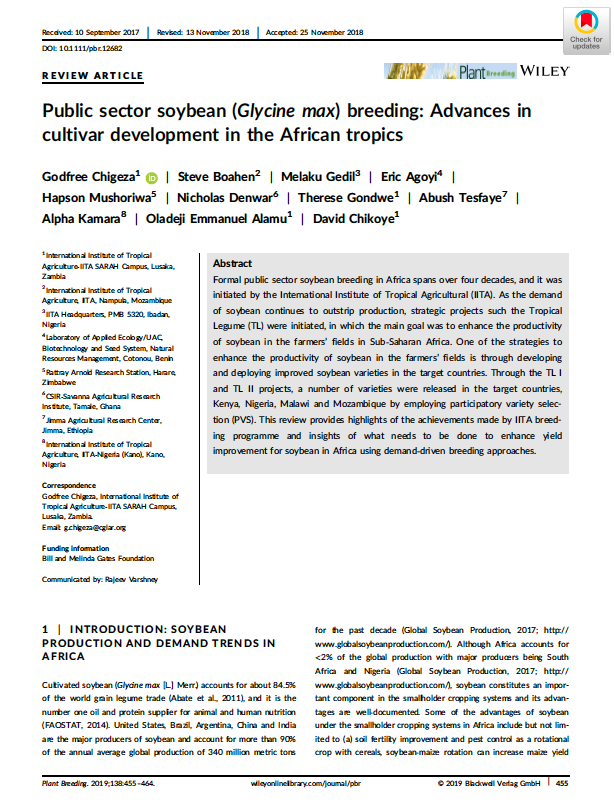Cowpea (Vigna unguiculata): Genetics, genomics and breeding
Summary
Cowpea, Vigna unguiculata (L.), is an important grain legume grown in the tropics where it constitutes a valuable source of protein in the diets of millions of people. Some abiotic and biotic stresses adversely affect its productivity. A review of the genetics, genomics, and breeding of cowpea is presented in this article. Cowpea breeding programs have intensively studied the qualitative and quantitative genetics of the crop to improve it. A number of initiatives including Tropical Legumes projects have contributed to the development of cowpea genomic resources. Recent progress in the development of a consensus genetic map containing 37,372 SNPs mapped to 3,280 bins will strengthen the cowpea trait discovery pipeline. Several informative markers associated with quantitative trait loci (QTLs) related to the desirable attributes of cowpea were generated. Cowpea genetic improvement activities aim at the development of drought-tolerant, phosphorus use-efficient, bacterial blight- and virus-resistant lines by exploiting available genetic resources as well as deploying modern breeding tools that will enhance genetic gain when grown by sub-Saharan Africa farmers.
Open resource Download resource Access resource on external site